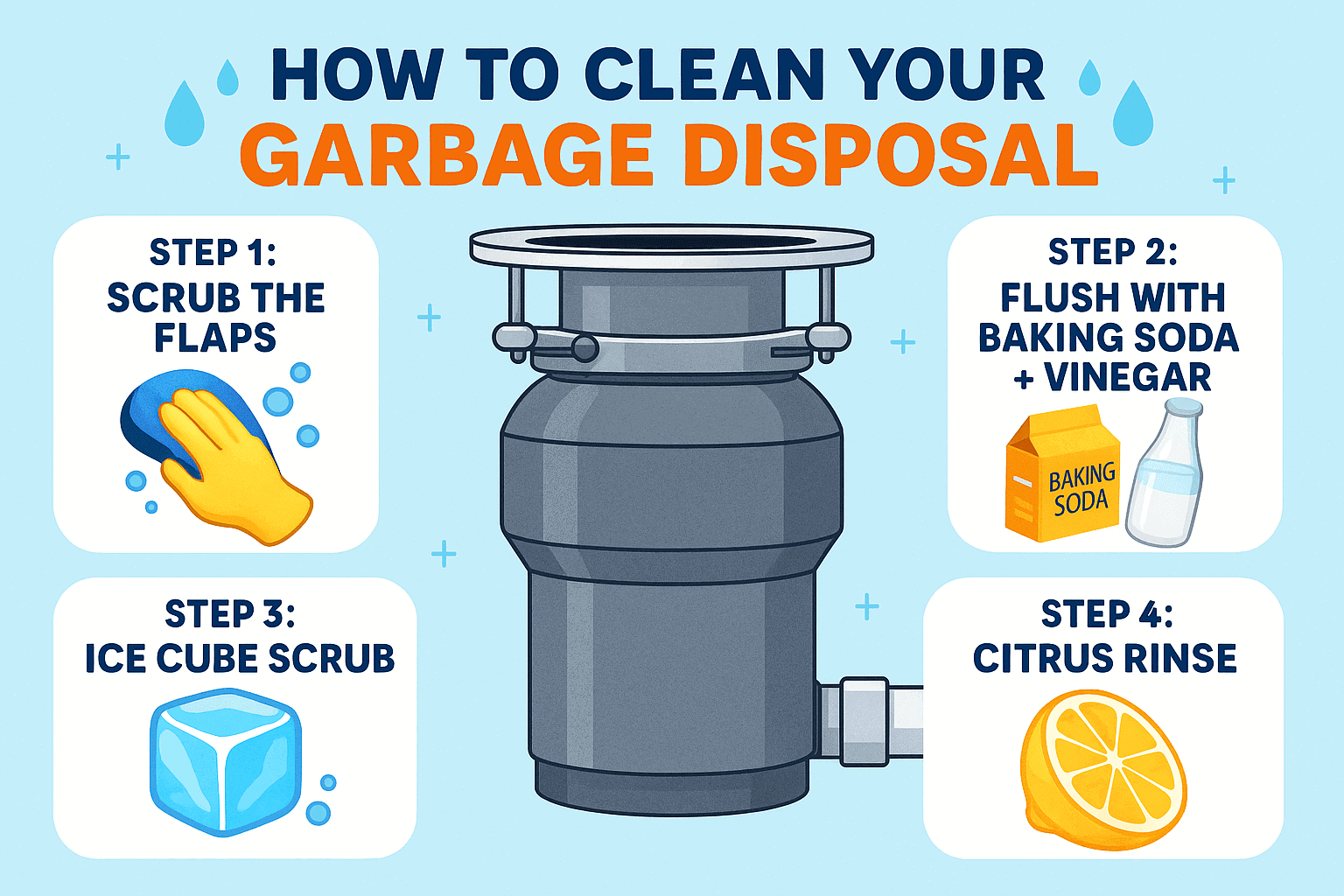 Plumbing Tips
Plumbing TipsHow to Clean Your Garbage Disposal (The Right Way) 🧼🌀
If your sink stinks, your disposal might be the culprit. This guide shows you how to deep clean and deodorize your garbage disposal safely — in just a few minutes.
Welcome to the official Dr. Pipes Plumbing Blog—your go-to source for practical plumbing advice, helpful DIY guides, and insider tips from licensed professionals. Whether you're fixing a faucet, troubleshooting a slow drain, or planning a full bathroom remodel, we’re here to help you do it smarter.
Our mission is to make plumbing knowledge accessible and useful. Learn how to protect your home, reduce water waste, and spot issues before they become emergencies. Articles are regularly updated by plumbing experts who believe in clear advice, real solutions, and empowering homeowners every step of the way.
 Plumbing Tips
Plumbing TipsIf your sink stinks, your disposal might be the culprit. This guide shows you how to deep clean and deodorize your garbage disposal safely — in just a few minutes.
 Bathroom Plumbing
Bathroom PlumbingIf your shower pressure is fading or spraying sideways, it’s time to clean your shower head. Here’s how to do it right — no special tools required.
 Outdoor Plumbing
Outdoor PlumbingNot sure where to direct your downspouts? Discover the right drainage strategies to keep your home dry and damage-free in any season.
 Appliance Plumbing
Appliance PlumbingWhether you're fixing a clogged washer or prepping for a move, this guide shows you exactly how to drain your washing machine — safely, cleanly, and without tools you don't already have.
 Drain Cleaning
Drain CleaningClogged drain? Don’t panic. This guide shows you how to snake a drain safely and effectively — plus when to call Dr. Pipes for the tough jobs.
 Plumbing Guides
Plumbing GuidesEverything you need to know about plumbing—from basics to emergency fixes—all in one place. Clear, practical, and written by the experts at Dr. Pipes Plumbing. 💧
 Plumbing Tips
Plumbing TipsLost your ring or earring down the drain? This step-by-step guide from Dr. Pipes shows you how to recover jewelry from your sink like a pro.
 Home Plumbing
Home PlumbingSeptic tanks aren’t set-it-and-forget-it. This guide shows you how to maintain your system, avoid costly repairs, and keep things flushing worry-free.
 Emergency Plumbing
Emergency PlumbingNot sure if it’s a true plumbing emergency? This guide from Dr. Pipes covers the critical signs, what to do right away, and when it’s time to call a pro.
Need a plumber fast? Call Dr. Pipes now! 📞🚿 1-877-377-4737